
Draft Program Year 2021 Ohio
Consolidated Plan
Annual Action Plan HOME-
American Rescue Plan Act (ARPA)
Allocation Plan Amendment
April 2022
Prepared By:
Ohio Department of Development
Community Services Division
Office of Community Development
Mike DeWine, Governor of Ohio
Jon Husted, Lt. Governor of Ohio
Lydia Mihalik, Director
Ohio Department of Development

Table of Contents:
Background 1
Consultation 1
Public Participation 4
Needs Assessment and Gap Analysis 5
HOME-ARPA Activities 10
Development of Affordable Rental Housing 10
Acquisition and Development of Non-Congregate Shelters 16
Administration 16
HOME-ARPA Production Goals 16
Preferences 16
HOME-ARPA Refinancing Guidelines 16
Appendix 17

1
Background
On March 11, 2021, President Biden signed the American Rescue Plan Act (ARPA) of 2021 in to law to
address the continued impact of the COVID-19 pandemic on the economy, public health, state and local
governments, individuals, and businesses. On April 8, 2021, HUD announced that the state of Ohio was
allocated $90,557,128 as part of the HOME-American Rescue Plan Act (HOME-ARPA) for homelessness
assistance and assistance to other vulnerable populations to:
• Provide capital investment for permanent rental housing
• Upgrade available stock of shelter to include non-congregate shelter
• Provide tenant-based rental assistance and supportive services
Consultation
HUD Notice CPD-21-10 issued on September 13, 2021, provided the list of HOME ARPA Allocation Plan
requirements including the citizen participation and consultation processes for public engagement. On
November 22, 2021, the Office of Community Development held the HOME-ARPA Allocation Stakeholder
Group Meeting via Webex to discuss the various eligible activities and funds available to begin the
process of planning the allocation plan. The HOME-ARPA Stakeholder Group was comprised of persons
representing statewide homeless organizations, local government, veterans, mental health and addiction
services providers, housing developers, fair housing groups along with various non-profit organizations
and state agencies that deal specifically with support services and housing as noted in the table below.
The Ohio Domestic Violence Network was consulted separately.
Based on the Stakeholder Group meeting, consensus was reached with regards to identifying priorities
for the use of HOME-ARPA funds throughout the state, with permanent supportive housing type projects
discussed as one of the top priorities.
The Stakeholder Group meeting identified possible partners for collaboration with the Ohio Housing
Finance Agency (OHFA) a key partner as part of the development of affordable housing through the
Housing Development Assistance Program (HDAP). Following the Stakeholder Group meeting
participants were asked to provide the OCD with comments in order to help development the HOME-
ARPA Allocation Plan. Additional feedback was received through direct consultation from a number of
organizations that have been summarized in the following table.
Table 1: HOME ARPA Consultation Table
Agency/Org
Consulted
Type of Agency/Org
Method of
Consultation
Feedback
Ohio
Municipal
League
Local Government
Representative
Virtual
stakeholder
meeting
The OHAC participated in the virtual stakeholder
meeting on 11/21/21. No feedback was received
during or following the meeting. The draft plan was
distributed to them for review.

2
Coalition on
Homelessness
and Housing in
Ohio
(COHHIO)
Homeless Service Providers.
Balance of State Continuum of
Care
Virtual
stakeholder
meeting, direct
phone calls, email
Bill Faith and Douglas Argue from the Coalition on
Homelessness and Housing in Ohio representing
homeless groups throughout the state indicated at the
virtual stakeholder meeting held on 11/21/21 that
there is a need to focus on the development of
affordable housing as opposed to TBRA. COHHIO
was also consulted on 4/7/22 to discuss the proposed
activities and budget included in the plan. They were
in agreement that less funds be directed towards non-
congregate shelter activity from the initial amount of
$30 million. If a significant amount of funds were to
be directed towards non-congregate language in the
plan should be added that allows for unspent funds to
be directed towards the development of rental
housing. In addition, they added that support services
is an important component as part of the development
of affordable rental housing that should be included
as a stand-alone activity in the plan.
Ohio Housing
Finance
Agency
(OHFA)
Public agencies that address the
needs of the qualifying
populations including
mainstream benefit systems
Virtual
stakeholder
meeting, direct
phone calls, email
Karen Banyai from OHFA indicated at the virtual
stakeholder meeting held on 11/21/21 that there is
strong need for permanent supportive housing
projects. They added that funding for support services
as part of the permanent supportive housing projects
is needed. OHFA was integral in the development of
the affordable rental housing development activity,
through consultation efforts between the initial
stakeholder meeting and final draft of the document.
Ohio
Department of
Health
Public agencies that address the
needs of the qualifying
populations including
mainstream benefit systems
Virtual
stakeholder
meeting
The OHAC participated in the virtual stakeholder
meeting on 11/21/21. No feedback was received
during or following the meeting. The draft plan was
distributed to them for review.
Community
Housing
Network
Rural affordable housing
developer
Virtual
stakeholder
meeting, email
Ryan Cessell from CHN agreed at the 11/21/21
stakeholder meeting that there is a strong need for
permanent supportive housing projects. They added
that funding for support services as part of the
permanent supportive housing projects is needed.
Ohio Housing
Authorities
Conference
Public Housing Agencies
(PHAs)
Virtual
stakeholder
meeting
The OHAC participated in the virtual stakeholder
meeting on 11/21/21. No feedback was received
during or following the meeting. The draft plan was
distributed to them for review.
CAA of
Columbiana
County
Homeless Service Providers,
Vertans's Groups, Balance of
State Continuum of Care
representative (Region 6 Lead)
Virtual
stakeholder
meeting
The HfH participated in the virtual stakeholder
meeting on 11/21/21. No feedback was received
during or following the meeting. The draft plan was
distributed to them for review.
Buckeye Hills
Regional
Council
Housing services provider,
Balance of State Continuum of
Care representative (Region 2
Lead)
Virtual
stakeholder
meeting
The HfH participated in the virtual stakeholder
meeting on 11/21/21. No feedback was received
during or following the meeting. The draft plan was
distributed to them for review.
Great Lakes
Community
Action
Partnership
Housing services provider
Virtual
stakeholder
meeting
The HfH participated in the virtual stakeholder
meeting on 11/21/21. No feedback was received
during or following the meeting. The draft plan was
distributed to them for review.

3
U.S.
Department of
Veteran
Services
Veterans’ Groups
Virtual
stakeholder
meeting
The HfH participated in the virtual stakeholder
meeting on 11/21/21. No feedback was received
during or following the meeting. The draft plan was
distributed to them for review.
Corporation
for Supportive
Housing
Advocacy organization,
supportive housing provider
Virtual
stakeholder
meeting
Based on one-on-one consultation on 3/31/22, as well
as feedback provided as part of the comment period
CSH has voiced support for the development of
affordable rental housing for all qualifying
populations throughout the state. They have indicated
that as part of these projects there is also a need for
support services such as housing clinical staff and
peer supporters. They also indicated that funding for
non-profit capacity building would be very valuable
for long-term sustainability.
Ohio
Department of
Veterans
Affairs
Veterans’ Groups
Virtual
stakeholder
meeting
The ODVA participated in the virtual stakeholder
meeting on 11/21/21. No feedback was received
during or following the meeting. The draft plan was
distributed to them for review.
Habitat for
Humanity
Rural affordable housing
developer
Virtual
stakeholder
meeting
The HfH participated in the virtual stakeholder
meeting on 11/21/21. No feedback was received
during or following the meeting. The draft plan was
distributed to them for review.
County
Commissioners
Association
Local Government
Representative
Virtual
stakeholder
meeting
The CCA participated in the virtual stakeholder
meeting on 11/21/21. No feedback was received
during or following the meeting. The draft plan was
distributed to them for review.
Ohio
Department of
Mental Health
and Addiction
Services
Public agencies that address the
needs of the qualifying
populations including
mainstream benefit systems
Virtual
stakeholder
meeting, direct
phone calls, email
Based on one-on-one consultation on 3/31/22, phone
calls/emails, as well as feedback provided as part of
the 11/21/21 stakeholder group meeting, OHMAS has
voiced support for the development of affordable
rental housing for all qualifying populations
throughout the state. They have indicated that as part
of these projects there is also a need for support
services such as housing clinical staff and peer
supporters, but understand that the timing of the grant
could make this difficult as part of program
implementation.
Ohio Civil
Rights
Commission
Organizations that address civil
rights, fair housing, and needs
of people with disabilities
Virtual
stakeholder
meeting
The Ohio Civil Rights Commission participated in
the virtual stakeholder meeting on 11/21/21. No
feedback was received during or following the
meeting. The draft plan was distributed to them for
review.
ODJFS, Office
of Workforce
and
Development
Public agencies that address the
needs of the qualifying
populations including
mainstream benefit systems
Virtual
stakeholder
meeting
The ODJFS participated in the virtual stakeholder
meeting on 11/21/21. No feedback was received
during or following the meeting. The draft plan was
distributed to them for review.

4
Ohio Domestic
Violence
Network
Victim Services Providers
Direct phone calls
and email
The Ohio Domestic Violence Network (ODVN), a
statewide organization that provides services for
domestic violence services was consulted 3/23/22
outside of the stakeholder group meeting. The ODVN
discussed the projects that are eligible, specifically
why Development’s initial HOME-ARPA proposal
included significant funds for non-congregate
shelters, not enough funding for housing development
for survivors and why funding was not dedicated for
TBRA and supportive services. It was brought to
ODVN’s attention that no preferences will be placed
on any of the eligible projects as outlined in the
HOME-ARPA Allocation Plan, so there are funding
options for independent housing developments for
survivors of domestic violence. Development
suggested that ODVN discuss these proposals with
OHFA to understand the process.
Sunday Creek
Horizons
Rural affordable housing
developer
Direct phone calls
and email
The Sunday Creek Development, a rural development
group located in Appalachian Ohio was consulted
3/11/22 outside of the stakeholder group meeting.
They expressed support for the development of
affordable rental housing, but indicated that a local
match commitment of the HOME-APRA funds
should be required for the development of affordable
housing projects. They also added that as there are
few non-profit developers in rural Ohio, particularly
Appalachian Ohio, both non-profit and private
developers should be eligible to develop affordable
housing projects. In addition, they expressed a
preference for HOME-ARPA to be utilized for 4%
gap new construction development as opposed to 9%
credits.
Findlay Hope
House
Homeless Service Provider,
Victim Service Provider,
Balance of State Continuum of
Care representative (Region 11
Lead)
Focus Group
Hope House participated in a focus group on 4/7/22
to learn more about the specific needs of homeless
persons, victims of domestic violence and qualifying
populations. The participants expressed support for
utilizing HOME-ARPA resources for the
development of additional affordable rental housing
units as well as providing support services that can
include transportation and financial management
training.
Public Participation
Following the HOME-ARPA Stakeholder Group Meeting the draft HOME-ARPA Allocation Plan was
prepared for public comment beginning on March 1, 2022. The draft HOME-ARPA Allocation Plan was
posted online along with the memo announcing the HOME-ARPA Allocation Plan public comment
process at https://development.ohio.gov/wps/portal/gov/development/community/community-
resources/ohio-consolidated-plan for the 15-day public comment period. A direct email was sent to over
600 communities and organizations throughout the state along with notification made available at
https://development.ohio.gov/home/news-and-events/all-events/2022-0302-public-hearing-home-arpa .
As indicated in the HOME-ARPA memo, the public hearing for the draft HOME-ARPA Allocation Plan took
place on March 2, 2022 at the
Vern Riffe Center 19th Floor, Room 1932, 77 South High Street Columbus,
Ohio 43215. As indicated on Development’s website, “the State of Ohio is an Equal Opportunity Employer
and Provider of ADA services” along with the following information regarding website accessibility “the
Department of Administrative Services has taken steps to ensure that sites on the InnovateOhio Platform

5
are at least minimally accessible to people with disabilities who use assistive technology to access the
Internet. A total of thirty-three individuals attended the public hearing virtually with two individuals
attending the public hearing. A total of three comments were received at the public hearing with ten
written comments received during the public comment period, which are included in the appendix of the
plan. A summary of the comments with responses are included below.
Based on feedback received during the draft HOME-ARPA Allocation Plan public comment period that
took place from March 1, 2022 – March 16, 2022, the plan was amended and posted for an additional 15-
day public comment period and public hearing to broaden public participation efforts. The 2
nd
public
comment period will take place from April 18, 2022 – May 3, 2022, with the Public Hearing taking place
@10:30am April 20, 2022 at the Vern Riffe Center 19th Floor, Room 1932, 77 South High Street
Columbus, Ohio 43215.
In addition to the public participation efforts outlined above the HOME-ARPA funds along with an
overview of the eligible activities and program requirements were discussed as part of the Community
Housing Impact and Preservation Program (CHIP) Advisory Group and Housing Development Assistance
Program Advisory Group meetings that were held virtually on November 2, 2021 and December 2, 2021.
The minutes of the CHIP meeting minutes can be found at
https://development.ohio.gov/wps/portal/gov/development/community/community-resources/ohio-
consolidated-plan
.
Needs Assessment and Gap Analysis
The state of Ohio reviewed the existing PY2020 – 2024 Consolidated Plan, Ohio Housing Finance
Agency’s (OHFA) Housing Needs Assessment, the OHFA Confronting Homelessness Report-
Homelessness in Ohio 2012- 2018, 2014-2018 Comprehensive Housing Affordable Strategy (CHAS)
Ohio’s 2020 Point-in-Time Report, the Corporation for Supportive Housing (CSH) State Investment
Response Estimator Tool Data, and the National Low-Income Housing Coalition (NHILC) Shortage of
Affordable Rental Homes to help determine the needs that exist for the following qualifying populations:
• Homeless, as defined in 24 CFR 91.5
• At risk of Homelessness, as defined in 24 CFR 91.5
• Fleeing, or Attempting to Flee, Domestic Violence, Dating Violence, Sexual Assault, Stalking or
Human Trafficking
• Other Populations:
o Other families requiring services or housing assistance to prevent homelessness
o At greatest risk of housing instability
o Veterans and families that include a veteran family member
Upon examination of the data and plans discussed previously, Development was able to determine the
gaps that exist for persons that fall under one of the qualifying population criteria as will be discussed
later. The following provides an overview of how the information contained within the plans and data
aligns with the mission of the HOME-ARPA.
Describe the size and demographic populations within the Participating Jurisdiction’s (PJ)
boundaries as well as the unmet housing and service needs of qualifying populations:
As reported in the 2020 point-in-time data presented to HUD, there was a total of 10,655 homeless
individuals and 8,343 homeless households in the state of Ohio on a single night, with just over 20%
percent of all households unsheltered. A total of 963 households, or 11.5%, were homeless with children.
The following table provides an assessment of persons that are covered by the qualifying population
categories as reported in the 2020 Point-in-Time Report. In 2020, there were 730 homeless veterans,
2,047 persons with severe mental illness and over 1,000 victims of domestic violence reported.
Table 2: 2020 CoC Point-in-Time Data
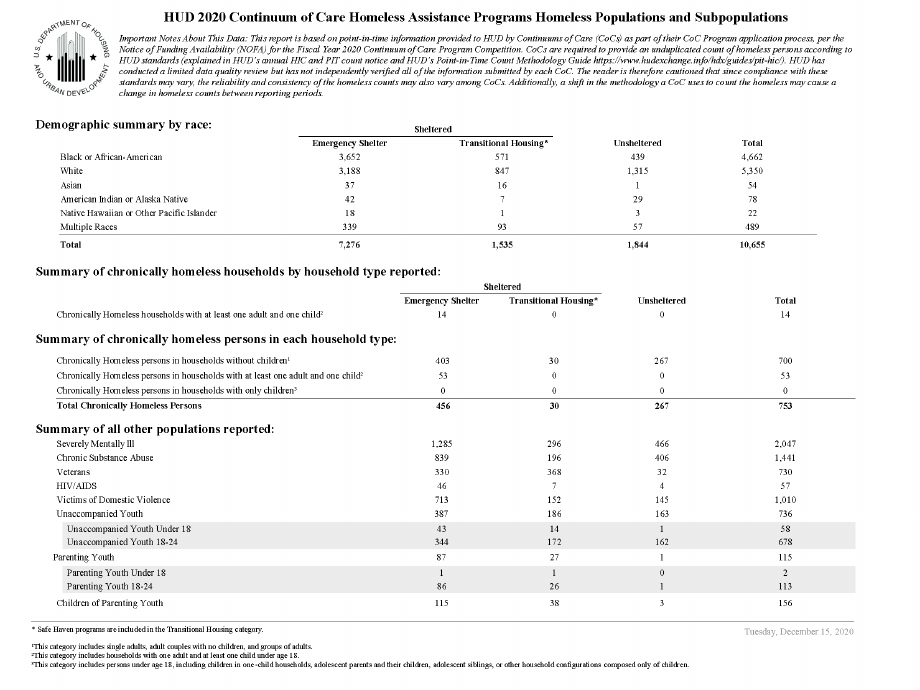
6
The OHFA Needs Assessment provides a comprehensive understanding of the critical housing trends
and needs facing Ohioans. The updated 2021 report “uses a wide range of state data to identify the scale
and scope of the state’s housing challenges. The Assessment evaluates Ohio’s current housing
landscape to gauge housing needs, identify gaps, and highlight key trends. Beyond its role in the Annual
Plan, findings from the Housing Needs Assessment inform OHFA’s programmatic and policy decisions
throughout the year, such as the Qualified Allocation Plan (QAP), to ensure that every Ohioan has access
to safe, affordable housing.” The Housing Insecurity section of the report specifically looks at the
population at risk for losing their home or experiencing homelessness. The findings reported in the OHFA
Needs Assessment help to understand what the housing conditions are like throughout the state, both in
rural and urban areas:
• Ohio's foreclosure rate (0.6%), 90-day delinquency rate (2%) and negative equity share (4%) in
December 2019 were all at record low levels, having fallen precipitously from the height of the Great
Recession.
• In 2018 there were 105,265 eviction filings statewide, representing 6.6% of all renter households.
Although consistently higher than the national rate, Ohio's eviction filing rate has fallen to the lowest
level in decades, having peaked in 2005 at 8.6%.
• Ohio's public and community schools reported that 35,214 students (2% of enrollment) lacked a fixed,
regular and adequate nighttime residence during the 2018–19 school year.
• In 2019 there were 32,362 beds in Ohio for homeless persons, including 9,231 in temporary housing
and 23,131 in permanent housing.
• 76,000 Ohioans accessed homelessness services in 2018 from one of the state's Continuums of
Care. This represents a 30% increase from 2012.
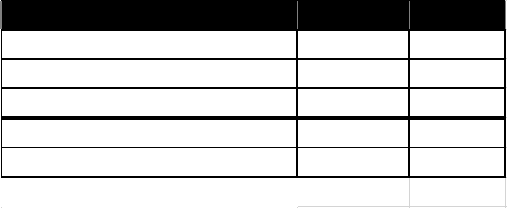
7
As indicated in the 2021 report dealing specifically with housing for homeowners, “More than 40% of
mortgage holders aged 65 or over are housing cost-burdened. Out of this age group, one-in-six mortgage
holders (17%) are severely cost-burdened. Black homeowners are twice as likely to be severely cost
burdened as white homeowners (14% compared to 7%), meaning they spend at least half their income on
housing.”
The housing affordability crisis is not limited to
homeowners. As reported in OHFA’s 2021
Needs Assessment, renters in Ohio also face
a tight market. “For every 100 extremely low-
income renters in Ohio, there were only 44
rental units affordable and available to them in
2018. Ohio's affordable housing gap has been
gradually shrinking, but at the current net
annual rate of around 5,000 units built or
made available for the lowest-income renters, it will take almost 50 years to close that gap. One-in-three
Black renters in Ohio (33%) were severely rent burdened in 2018, compared to one-in-five white renters
(22%).” The issue of housing being overcrowded, and housing cost burden significantly impacts rental
housing with “One in four renters in Ohio (25%) experienced severe housing problems, as defined by
HUD, including incomplete kitchen and plumbing facilities, severe overcrowding and severe housing cost
burden.” In terms of housing availability, the following table shows how the vacancy rate has changed
from 2010 – 2019 accordingly to the ACS 5-year estimates. The rental vacancy rate has decreased
during that period from 9.5% to 5.3%, which provides another sign that the housing market in Ohio,
particularly rental housing, has been significantly impacted since the 2008-2009 housing recession.
Additional information regarding the total number of renter and owner households throughout the state
experiencing housing problems, as well as housing cost burden can be found in the appendix. The
Comprehensive Housing Affordability Strategy (CHAS) data included in the appendix provides a summary
of the ACS data for the 2014-2018 period released on September 29, 2021, by Housing and Urban
Development (HUD). It should be noted that nearly 43% of all renter households reported at least one of
four housing problems, and 18.4% of owner households reported one of four housing problems.
Challenges to secure and maintain affordable housing are particularly difficult for Ohio's children and
aging adults. Both children and older adults are more likely to live in cost burdened households and thus
face potential housing insecurity. As Ohio's population continues to age, a growing number of older adults
are also vulnerable to high housing costs. One of every nine households have a single adult aged 65 and
over, making regular home maintenance challenging. Older Ohioans also have higher rates of disabilities:
nearly two-thirds of homes in Ohio are inaccessible to someone in a wheelchair.”
The following excerpt from the Confronting Homelessness report prepared by OHFA sheds some light
with regards to the unmet housing and service needs of qualifying populations:
“The recent COVID-19 crisis has highlighted the importance of a safe, stable, and affordable
home in maintaining a healthy community. The health crisis and related economic crisis have
exacerbated the deep racial and economic inequalities that were already present in Ohio. In the
wake of this economic and health crisis, Ohio is facing increasing challenges to keeping people in
their homes. As hundreds of thousands of Ohioans have filed for unemployment
and experienced disruptions in their income, we expect many of these households will be
unable to pay rent or their mortgage and may face housing instability in the coming year.
Prior to COVID-19, a lack of affordable housing already existed in Ohio; in 2018, the shortage
was more than 256,000 housing units for extremely low-income renters. For every 100 extremely
low-income renters there were only 44 available and affordable units. This affordability crisis will
likely be exacerbated in the coming year.
2019
2010
Total housing units
5,202,304
5,107,273
Occupied housing units 4,676,358 4,552,270
Vacant housing units 525,946
555,003
Homeowner vacancy rate
1.4%
2.6%
Rental vacancy rate 5.3%
9.5%
Source:: 2015-2019 and 2006-2010 ACS 5-Year Estimates DP-04 Data

8
As we begin to understand the changes to homelessness in Ohio, it is critical to understand
the patterns of homelessness that pre-existed COVID-19. Available data presents a somewhat
mixed picture. The 2018 Point-In-Time (PIT) count identified 10,249 homeless individuals in the
state
on a single night in January, a decline of about 200 individuals from 2016. By contrast, in
the same year, Ohio Department of Education data showed that 23,398 Ohio public school
students lacked stable housing at some point during the 2018-2019 school year, an increase of
nearly 5,000 from just two years prior. However, both the PIT count and ODE data only capture
a small portion of those who experience homelessness each year.”
The OHFA report also includes data indicating where people went after exiting the homeless system,
which highlights the lack of housing and services necessary to help extremely low-income Ohioans
achieve housing stability.
• Only 21% of people exiting the homeless system entered a subsidized rental unit, while 45% moved
into an unsubsidized unit;
• 27% moved in with family or friends, which often leads to future bouts of homelessness;
• 9% went to another emergency shelter;
• 7% exited shelter to a place not fit for human habitation.
The following data reported in the OHFA Homelessness Report discusses veterans and victims of
domestic violence, which are classified as high-risk populations with regards to homelessness.
Veterans
Of clients entering programs in 2018, 7.4% were military veterans, with veteran status not reported for
1,046 people. During the study period:
• The average age for veterans entering the CoC system during the study period was 52.
• More than 330 veteran households included children at entry.
• The largest prior residence for veterans included temporary shelter (33%) and a place not fit for
habitation (24%).
• The most common exit destinations were an unsubsidized home (35%), a subsidized home (21%), or
moving with friends or family (18%).
Victims of Domestic Violence
Of all clients, 20.3% reported surviving domestic violence at some point in their lives, including 33% of
women and 9.7% of men. Survivor status was not disclosed for 160 entrants. During the study period:
• The average age for domestic violence survivors at first recorded entry was 35; about 1,680 survivors
who accessed services were children under the age 18 (11% of all domestic survivors who accessed
services in 2018).
• Of all domestic violence survivors, 74% were women.
• Prior to accessing services, 42% were in another shelter, 21% were staying with family or friends, and
19% were literally homeless or living in a place not meant for human habitation.
• The most common exit destinations were an unsubsidized home (38%), moving with friends or family
(30%), or a subsidized home (15%).
• Just over a third of the survivors accessing services (35%) entered with children.
Estimating the number of domestic violence survivors experiencing homelessness exclusively through
HMIS records, however, is challenging.
Identify and consider the current resources available to assist qualifying populations, including
congregate and non-congregate shelter units, supportive services, Tenant-Based Rental
Assistance, and affordable and permanent supportive rental housing

9
In Ohio, there are several programs funded with both federal and state resources that can assist
qualifying populations with supportive services, along with affordable and permanent supportive rental
housing. An overview of the housing programs offered by Development and OHFA are located on
Development’s website. These programs utilize Ohio Housing Trust Fund (OHTF), Community
Development Block Grant (CDBG), CARES-Act, HOME Investment Partnership, Emergency Solutions
Grant (ESG), Housing Opportunities for Persons with AIDS (HOPWA) and National Housing Trust Fund
dollars to help conserve and expand the affordable housing stock; address the issue of homelessness in
Ohio; and provide short-term, emergency assistance and other public services for low-income Ohioans
and qualifying populations. In addition to the state and federal funds offered by Development and OHFA,
Congress has recently approved a total of nearly $1.5 billion of Emergency Rental Assistance (ERA)
allocated to the State of Ohio, to pay up to 12 months of arrears and up to three months prospective rent
for people experiencing housing instability. The statute allows housing providers to initiate ERA
applications with cooperation from their tenants.
Identify the gaps within the current shelter and housing inventory as well as the service delivery
system. Explain how the level of need and gaps in the shelter and housing inventory and service
delivery systems based on the data presented in the plan were determined:
The Low-Income Housing Coalition’s most recent Gap Report indicates that there were only 184,584
rental units in 2019 that were affordable and available to Ohio’s 436,611 extremely low-income
households. With national median rent prices increasing nearly 18% last year (Apartment List), we can
assume that gap has grown much larger over the past two years. Another statewide dataset to
understanding what housing gaps exist within the current shelter and housing inventory is the Corporation
for Supportive Housing’s (CSH) State Investment Response Estimator Tool (S-IRET) (see appendix). The
CSH S-IRET tool annualizes Ohio’s PIT and HIC to determine the level of need for three evidence-based
interventions that end or prevent homelessness. The following is a summary of the housing gap for
individuals and families:
• 1,885 gap in permanent supportive housing units for individuals
• 23,390 gap in rapid rehousing units for individuals and 2,068 for families
• 3,376 gap in units for homeless prevention for individuals and 1,331 for families.
Identify the characteristics of housing associated with instability and an increased risk of
homelessness if the PJ will include such conditions in its definition of “other populations” as
established in the HOME-ARP notice:
HUD’s Comprehensive Housing Affordability Strategy (CHAS) data
(
https://www.huduser.gov/portal/datasets/cp.html), which has been summarized in the appendix,
reports that 381,540 Ohio renter households have at least 1 of 4 severe housing problems, which
represents 24.1 percent of all renter households. The four severe housing problems are: incomplete
kitchen facilities; incomplete plumbing facilities; more than 1 person per room; and cost burden greater
than 50%, which can all lead to greater risk of housing instability and homelessness. The definition of
substandard housing is defined at 24 CFR § 5.425.
Identify priority needs for qualifying populations:
Based on the data that has been discussed previously along with the conversations that took place as
part of the consultation process, the need for permanent supportive housing is the greatest priority for
qualifying populations. The Stakeholder Group indicated that there was a lack of other resources
available for permanent supportive housing projects and that the HOME-ARPA funding is a critical
resource in filling the gap. In addition to the need for permanent supportive housing there also exists a
need to fill the gap that wasn’t fully covered by the ESG-CV and CDBG-CV CARES Act funds by
establishing or enhancing non-congregate housing opportunities in the state. Development has been
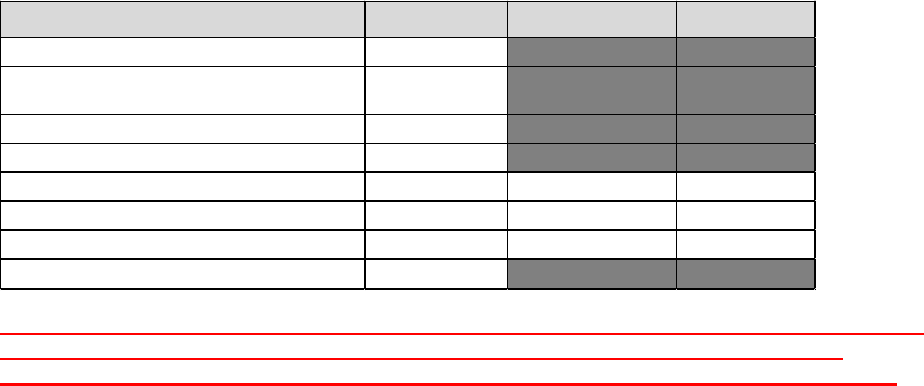
10
approached by organizations identifying the need for capital improvements or acquisition and
development of non-congregate shelters.
Based on the needs mentioned and excluding administration and planning funds, Development will
allocate the majority of its allocation (60%) to developing affordable and permanent supportive housing.
The remainder will be made available to organizations for the conversion, renovation, or new
development of non-congregate shelters.
HOME-ARPA Activities
Describe the method for soliciting applications for funding and/or selecting developers, service
providers, subrecipients and/or contractors and whether the PJ will administer eligible activities
directly:
The activities associated with HOME-ARPA are included in this section. The following provides an
overview of the method distribution along with associated program requirements. It should be noted that
there will be no preference given beyond the qualifying populations included in HUD Notice: CPD-21-10.
Use of HOME-ARPA Funding Table
Development of Affordable Rental Housing – Housing Development Assistance Program
(Housing Credit Gap Financing (HCGF) and and Bond Gap Financing (BGF), and
Housing Development Gap Funding (HDGF)) Activity for Rental Housing Development
HUD Notice: CPD2021-10 requires the following targeting requirements for Rental Housing:
a. Not less than 70 percent of the total number of rental units assisted with HOME- ARP
funds by the PJ must be restricted for occupancy by households that are qualifying households
at the time of the household’s initial occupancy; and,
b. Not more than 30 percent of the total number of rental units assisted with HOME- ARP
funds by the PJ may be restricted to low-income households. These rental units do not have to be
restricted for occupancy by qualifying households, however rental units restricted to low-income
households are only permitted in projects that include HOME-ARP units for qualifying
households.
Housing Development Assistance Program (Housing Credit Gap Financing and Bond Gap
Financing Activity) Funding Amount: Approximately $67.5 million in HOME-ARPA. The HOME-ARPA
dollars, will be awarded through the Ohio Housing Finance Agencies (OHFA) HDAP to provide gap
financing to developments serving low-income and extremely low-income households serving a
population at risk of homelessness or experiencing homelessness. Funds may be used to preserve or
develop housing serving target populations. Federal regulations may be waived as outlined in HUD
Notice: CPD-21-10.
Funding Amount Percent of the Grant Statutory Limit
Supportive Services
Acquisition and Development of Non-Congregate
Shelters
10,000,000.00
TBRA
Development of Affordable Rental Housing 67,500,000.00
Non-Profit Operating 5%
Non-Profit Capacity Building 5%
Administration and Planning 13,057,128.00 14.4% 15%
Total HOME ARP Allocation
90,557,128.00
11
The HCGF program utilizes HOME-ARPA funding to provide gap financing assistance to developments
using competitive (9%) LIHTCs to renovate or construct service enriched affordable housing serving low-
and moderate- income households, and HOME-ARP Qualified Populations.
Up to $2.5 million will be provided for enhanced HCGF to developers of proposed permanent supportive
housing projects that submitted applications for 2022 competitive (9%) Low- Income Housing Tax Credits
(LIHTC) on February 10, 2022 and meet all criteria to compete in the Service Enriched Housing Pool as
defined in the 2022-23 Qualified Allocation Plan. In exchange for an enhanced HCGF-HOME-ARP award,
developers must agree to set-aside 100 percent of the total units for HOME-ARP Qualified Populations.
The amount of funding per project will equal the original HCGF requested plus an amount of funds equal
to 25% of the deferred developer’s fee listed in the application in order to strengthen the financial
sustainability of the project. The maximum award per project is $750,000.
The BGF program utilizes HOME-ARPA funding to provide gap financing assistance to developments
using multifamily bonds with non-competitive (4%) LIHTCs to renovate or construct affordable housing
serving low- and moderate-income households, and HOME-ARP Qualified Populations the HOME-ARP
funds will be allocated for BGF as follows:
• Up to $17 million will be reserved for sponsors of proposed permanent supportive housing
projects that submitted an application for competitive (9%) LIHTC in 2021 but did not receive an
allocation of credits and agreed to restructure the project financing using multifamily bonds and
4% LIHTC by submitting a revised application in January 2022. Developers must agree to set
aside 100% of the units for HOME-ARP Qualified Populations and the amount of funding per
project based on need defined as compensation for the reduction of credits from 9% to 4% plus
funds to cover additional bond costs and the original HDAP requested plus funds needed for a
capitalized operating reserve for the QP units.
• A minimum of $31.5 million will be reserved for sponsors of proposed integrated permanent
supportive housing multifamily bond projects that submit an application in the 2022 competitive
BGF Program funding round in summer 2022. Developers of New Construction projects will
have a 20% set-aside for HOME-ARP Qualified Households. Preservation projects will have a
30% set-aside for HOME-ARP Qualified Households. All projects will be capped at $2.5 million
per project in HOME-ARP. Developers of new construction or preservation projects that agree
to set-aside 70% or more of the total units for Qualified Populations may receive up to $4.25
million in HOME-ARP funding. If funds are available, projects may be awarded additional gap
financing using OHTF to ensure the financial feasibility of the project. Additional funding may be
allocated if the project has a demonstrated need and is granted an exception request.
Any unused and uncommitted funds will be reserved to 2023 BGF and 2023 HDGF.
The HDGF program utilizes HOME-ARPA funding to provide gap financing assistance to small
permanent supportive housing projects consisting of 25 units or less using other private and public
resources to renovate or construct service enriched affordable housing serving low- and moderate-
income households, and HOME-ARP Qualified Populations. All remaining uncommitted HOME-ARP
funds remaining after all HOME-ARP HCGF and BGF awards have been made will be distributed through
the 2022 HDGF funding round in fall 2022. All projects will be required to set aside 100% of the total units
for HOME-ARP Qualified Persons. The amount of HOME-ARP HDGF will equal the total project cost
less all committed sources. All projects will be capped at $1 million per project in HOME-ARP. If funds are
available, projects may receive an additional award of OHTF to cover any remaining financing gaps. The
OHTF plus HOME-ARP may not exceed 50% of the total project cost.
OHFA reserves the right to exceed or reduce the above award amounts based on the location and needs
of the project. Award amounts for the BGF program will be based on funding availability and the needs of
the project.

12
As noted in the Waivers and Alternative Requirements for Implementation of the HOME American
Rescue Plan Act (HOME-ARPA) Program, the requirements of 24 CFR 92.218 through 24 CFR 92.222
and any other requirements for matching contributions in 24 CFR part 92 shall not apply to HOME-ARPA
funds, as subsection (c)(1) of ARPA states that the underlying statutory requirement at section 220 of
NAHA (42 U.S.C. 12750) does not apply to HOME-ARPA funds.
If utilizing bonds, the development cannot have closed on the bonds prior to application for HDAP funds.
Closing "in Escrow" will be considered by OHFA to be closed.
Eligible Activities: HDAP funds may be applied in the development budget toward non-related party
acquisition, hard costs associated with new construction or rehabilitation, and developer fees associated
with the project.
Funding Requirements
1) Reporting and Record Keeping: The applicant will be responsible for compliance with
applicable implementation, reporting and record keeping requirements associated with HOME-
ARPA, OHFA, and state regulations.
2) Environmental Review Requirements: OHFA will conduct a supplemental environmental
review for all projects receiving HDAP funds. The environmental review will be completed in
accordance with the relevant state or federal requirements as specified below.
Environmental reviews are conducted in accordance with 24 CFR. Part 58. Development serves
as the Responsible Entity.
3) Determination and Requirements for Assisted Units: Assisted units must meet all
requirements as stated in HUD Notice: CPD-21-10.
4) Rehabilitation Standards: Developments that involve rehabilitating structures must adhere to
OCD Residential Rehabilitation Standards (RRS). Refer to OCD’s RRS Handbook, or other
standards agreed on by OHFA and OCD.
5) Lead-Based Paint Standards: All housing developments designed to rehabilitate pre-1978
structures must adhere to the Development's Lead-Based Paint Guidelines.
6) Relocation Standards: All developments, regardless of funding source, that involve
rehabilitating existing occupied units must submit a Relocation Plan or rehabilitation strategy that
outlines the plan to work with the tenants in place. If the development receives federal funds, the
plan must meet the requirements set forth in the Uniform Relocation Assistance and Real
Property Acquisition Policies Act of 1970, as amended. If the development involves acquisition,
the applicant must supply the Real Property Acquisition and Relocation Certifications and
Voluntary Acquisition Forms for the project.
7) Timeline: The HDAP recipient will confirm that all financing is committed and submit a request to
close on HDAP funding to OHFA which must be received at the OHFA offices at 57 East Main
Street, Columbus, OH 43215, by the date(s) set forth in the recipients Funding Agreement.
8) Changes to Approved Applications: The HDAP recipient must notify OHFA, in writing, of all
changes, financial or otherwise, relating to an application for financial assistance of an approved
development. Failure to notify OHFA may jeopardize the applicant's ability to receive assistance
in the future. If there are any substantive changes to the development prior to executing the
Funding Agreement, OHFA may require the applicant to resubmit the application.
9) Eligible/Ineligible Applicants: Applicants can be private for-profit, not-for-profit
developers/owners, or public housing authorities. For developments owned by partnerships
13
(limited liability corporations, etc.), to qualify for financing terms available to not-for-profit
organizations, the majority/controlling general partner interest must be held by a not-for-profit (for-
profit affiliates of not-for-profit parent corporations qualify as a not-for-profit in a partnership
situation). To request financing terms available to not-for-profit organizations, the applicant must
provide evidence of IRS 501(c)(3) or 501(c)(4) status. To be eligible for funding, religious
organizations must meet the provisions in 24 CFR § 92.257.
OHFA reserves the right to evaluate developments, including those that have previously received
an award of HDAP, and that have received other forms of federal subsidy to determine what
amount, if any, the development needs to be financially feasible. OHFA reserves the right to
evaluate such developments to determine the facts and circumstances that necessitate the need
for additional funds and to ensure projects are not over subsidized.
OHFA would prefer that HDAP resources be used to provide new opportunities for affordable
housing or to preserve existing, currently subsidized or rent-restricted affordable housing for the
residents of Ohio. Therefore, OHFA reserves the right to determine if rehabilitating existing
affordable renter-occupied housing without project-based subsidy is eligible.
10) Projects per Developer: Developers may submit more than one proposed development per year
based on the organization’s capacity to implement multiple and/or simultaneous projects. OHFA
reserves the right to require further information and to decide on an organization’s capacity to
carry out multiple developments, which will include status and progress on projects using any
resources provided by OHFA. OHFA may also limit the amount of HDAP awarded to any single
developer.
OHFA reserves the right to combine the costs for developments that are located near each other
and share similar attributes such as project type, construction style, and development team.
11) Cost Certification: After construction is completed, each development may be required to obtain
and submit a cost certification prepared by an independent certified public accountant or other
comparable documentation approved by OHFA.
12) Fee Limits: Developer's fee for applications submitted for HDAP funding must be consistent with
the limits established in the Qualified Allocation Plan (QAP), BGF Guidelines, or other funding
guidelines.
13) Public Notification: Applicants intending to develop rental housing (including lease-purchase)
must comply with the Ohio Revised Code §175.07 pertaining to public notification.
14) Loans:
• 2% interest will be charged unless otherwise agreed to by OHFA;
• Loan will mature at the end of the affordability period. The affordability period is defined as
the minimum term required in 24 CFR 92 and any extended affordability period imposed by
OHFA;
• Collateral will be a subordinate mortgage. OHFA must be in second or shared-second lien
position unless otherwise agreed to by OHFA based on good cause and sufficient supporting
documentation;
• Payments will be based on a percentage of the available cash flow as defined by OHFA. If
loan payments flow from a third party to the recipient, they will be excluded from cash flow
analysis provided they are transferred to OHFA in full. Any remaining balance on the loan is
due as a balloon payment at the end of the term or sale, whichever is first. On a case-by-
case basis, OHFA may agree to subordinate to other government investors and accept
payments consistent with their terms;
• Loan interest will accrue, and repayment obligations will start following the closeout of the
project, regardless of the Placed-in-Service date. Closeout means the HDAP recipient
leased the “Assisted” units, provided the appropriate documentation to OHFA, and OHFA

14
approved the documentation as evidenced by a closeout letter from Analyst; and
• Funds cannot be lent to the project at a rate higher than OHFAs rate without the approval of
OHFA. OHFA reserves the right to designate which general partner/managing
member/owner, if more than one (1), will be the recipient.
15) Grants:
Grants must be requested and are available only when all the following conditions are met:
• The eligible applicant is the controlling general partner and is a 501(c)(3) or 501(c)(4) not-
for-profit (for-profit affiliates of not-for-profit parent corporations qualify as a not-for-profit in a
partnership situation);
• At least 20% of the units in the development will be occupied by and affordable to
households at or below 35% of the area median income;
• The recipient treats the funds as a grant for tax purposes. If the recipient is the project, it will
receive an IRS Form 1099; and
• The recipient does not loan the funds to the development but treats it as a grant or capital
contribution.
Developments that meet both the requirements established by OHFA for Permanent Supportive
Housing and the above-noted conditions are also eligible to request a grant.
For low-income housing tax credit (LIHTC) developments that request a direct grant, the HDAP funds
may be included in eligible tax credit basis if the funds are a general partner's capital contribution and
provided that the development can provide a tax opinion certifying the funds as part of eligible basis.
The development must still meet all the above-noted requirements to be eligible for a grant. However,
when considering grant eligibility, OHFA will apply the regulations governing the funds awarded when
considering how the recipient passes the award on to the development.
16) Fees:
Application Fee: OHFA may elect to impose application, document correction and/or funding fees
as it determines necessary. Fees may be based on threshold deficiencies and designed to
encourage complete and accurate application submissions with a likelihood of success.
Amendment/Extension or Reinstatement to Funding Agreements: OHFA may elect to impose a
$100 fee for each amendment or extension made to the funding agreement. OHFA may also
elect to impose a $1,000 fee to reinstate an expired funding agreement. These fees are
implemented to encourage applicants to complete developments in a timely manner and as
proposed in the application.
17) Waivers:
OHFA reserves the right to waive State-imposed requirements if the applicant demonstrates a
compelling reason. OHFA will review such requests on a case-by-case basis.
18) Application Review Criteria and Review Process:
All programs under the HDAP will include a review of the application and all required supporting
documentation to ensure that the development is financially feasible and meets all HOME-ARPA
and/or OHFA program requirements. OHFA reserves the right to determine cost reasonableness
and fees associated with the development.
The application will be assigned to a Housing Grant Analyst (HGA) who will be responsible for the
application review, funding agreement processing and resolving post-award implementation
issues.
Threshold Review - The threshold criteria assure that all selected developments comply with
program requirements. Applications that do not meet the threshold requirements will not be
considered for funding. The only exception to this will be the HCGF developments, which will
follow the Threshold Review process established in the OHFA QAP.

15
Competitive Review - Applications submitted for the HCGF program will follow the allocation
system established in the OHFA QAP.
Applications submitted for the HDGF program will be evaluated based on the following criteria: 1)
experience and capacity of the applicant and development team; 2) financial feasibility of the
development; 3) site selection; 4) development design; 5) demonstrated market for the
development; and 6) policies as stated in the program guidelines.
Applications submitted for the BGF program will be evaluated based on the following criteria: 1)
experience and capacity of the applicant and development team; 2) financial feasibility of the
development; 3) site selection; 4) development design; 5) demonstrated market for the
development; and 6) policies as stated in the program guidelines. OHFA reserves the right to
prioritize projects located in Ohio’s Appalachian counties (excluding HUD Entitlement
Communities and Non-entitlement Participating Jurisdictions); HUD Non-entitlement Communities
and Non-Participating Jurisdictions, projects preserving existing affordable housing, or projects
undergoing a RAD conversion.
Pro Forma or Affordability Analysis - A financial review will include an evaluation to determine the
amount of funds necessary to complete the actual development of the development, considering
all other committed sources.
The financial review for rental housing developments includes the analysis of a 15- and/or a 30-
year pro forma, assuming a 2% annual revenue increase, a 3% annual operating expense
increase, and a 7% stabilized vacancy rate. If the pro forma forecasts different assumptions,
justification must be provided. The affordability analysis for rental developments requires the
resident's rent and utility payments not to exceed 30% of an income-qualified household's income
at the projected affordability level. Utility allowance information must be obtained from the local
public housing authority, local utility provider, or other approved source (e.g. actual usage history
on rehabilitation developments).
Capitalized Operating Reserves – OHFA will modify program guidelines to include capitalized
operating reserves for projects that do not provide project-based rental subsidy for the QP units.
that meet the requirements of HUD CPD Notice 21-10 and related HUD guidance as an eligible
use of HOME-ARP funds. OHFA will administer the reserves and comply with the requirements
for management and oversight outlined in HUD CPD Notice 21-10.
Pre-Award Site Visit - OHFA may conduct a site visit prior to submitting a funding
recommendation. The purpose of the visit is 1) to evaluate the proposed development site for
suitability and impact on the surrounding community; 2) to confirm the status of previously funded
developments; and 3) to develop the relationship between the applicant and OHFA. Both parties
can discuss any issues or concerns regarding the proposed development and the organization
has an opportunity to familiarize OHFA staff with their overall programs and operations.
Formal Recommendation for Funding - OHFA will present the development and submit a funding
recommendation, either for approval or rejection, to the OHFA Board's Multifamily Committee.
This Committee will submit a formal recommendation to the OHFA's Board for consideration and
approval.
Units Restricted for Occupancy by Qualifying Households: The HOME-ARP rent must comply
with HUD Notice: CPD 2021-10 and may not exceed 30 percent of the adjusted income of a
household whose annual income is equal to or less than 50 percent of the median income for the
area, as determined by HUD (i.e., Low HOME Rents).If a household receives federal or state
tenant-based rental assistance, the rent is the rent permissible under the applicable rental
assistance program (i.e., the tenant rental contribution plus the rental subsidy allowable under
that rental assistance program).

16
19) Application Submission:
Applications must be submitted on a compact disc, or electronically via OHFA’s ftp site, with all
required documents clearly labeled as detailed in the respective program’s guidelines.
Applications must be submitted to the Office of Multifamily Housing, Ohio Housing Finance
Agency, 57 East Main Street, Columbus, Ohio 43215-5135.
Incomplete Applications: OHFA will perform a preliminary review of all submissions to determine
whether a complete application has been submitted. If it is determined that OHFA cannot
evaluate the proposal based on the information provided, the application will be returned to the
applicant along with a written listing of the application’s deficiencies.
Acquisition and Development of Non-Congregate Shelters
Development will reserve the remaining $10 million of its allocation for acquiring and developing NCS for
qualifying individuals and families. This activity may include but is not limited to the acquisition of land and
construction of NCS or acquisition and/or rehabilitation of existing structures such as motels, hotels, or
other facilities to be used for NCS. Organizations interested in the HOME-ARP NCS activity will be
required to provide their own operating expenses.
Development reserves the right to prioritize projects located in Ohio’s Appalachian counties (excluding
HUD Entitlement Communities and Non-entitlement Participating Jurisdictions) and in HUD Non-
entitlement Communities and Non-Participating Jurisdictions
If the need for the NCS activity is less than expected, the balance of uncommitted funds will be
transferred to develop more permanent supportive housing units under the OHFA structure above.
Administration
A total of just over $13 million has been budgeted to cover the implementation of the projects as well as
the long-term compliance requirements for the affordability period. In addition, administration funds will
be used for the training of compliance staff to implement HOME-ARPA, as well as monitoring for
compliance.
HOME-ARPA Production Goals
The activities included in the HOME-ARPA align with the priority needs identified in the PY 2020-2024
Ohio Consolidated Plan section SP-25 that places high priority to homelessness and rapid rehousing as
well as affordable housing production. In addition, the activities align with the goals stated in section SP-
45 of the PY 2020-2024 Ohio Consolidated Plan that deal specifically with housing preservation and
accessibility, affordable housing as well as supportive housing.
There will be approximately 100 rental units rehabilitated along with approximately 700 new rental units
constructed as part of the HDAP Housing Credit Gap Financing (HCGF) and Bond Gap Financing (BGF)
project.
Preferences
There will be no preference given beyond the qualifying populations included in HUD Notice: CPD-21-10.
HOME-ARPA Refinancing Guidelines
HOME-ARPA will not be used to refinance existing debt secured by multifamily rental housing.
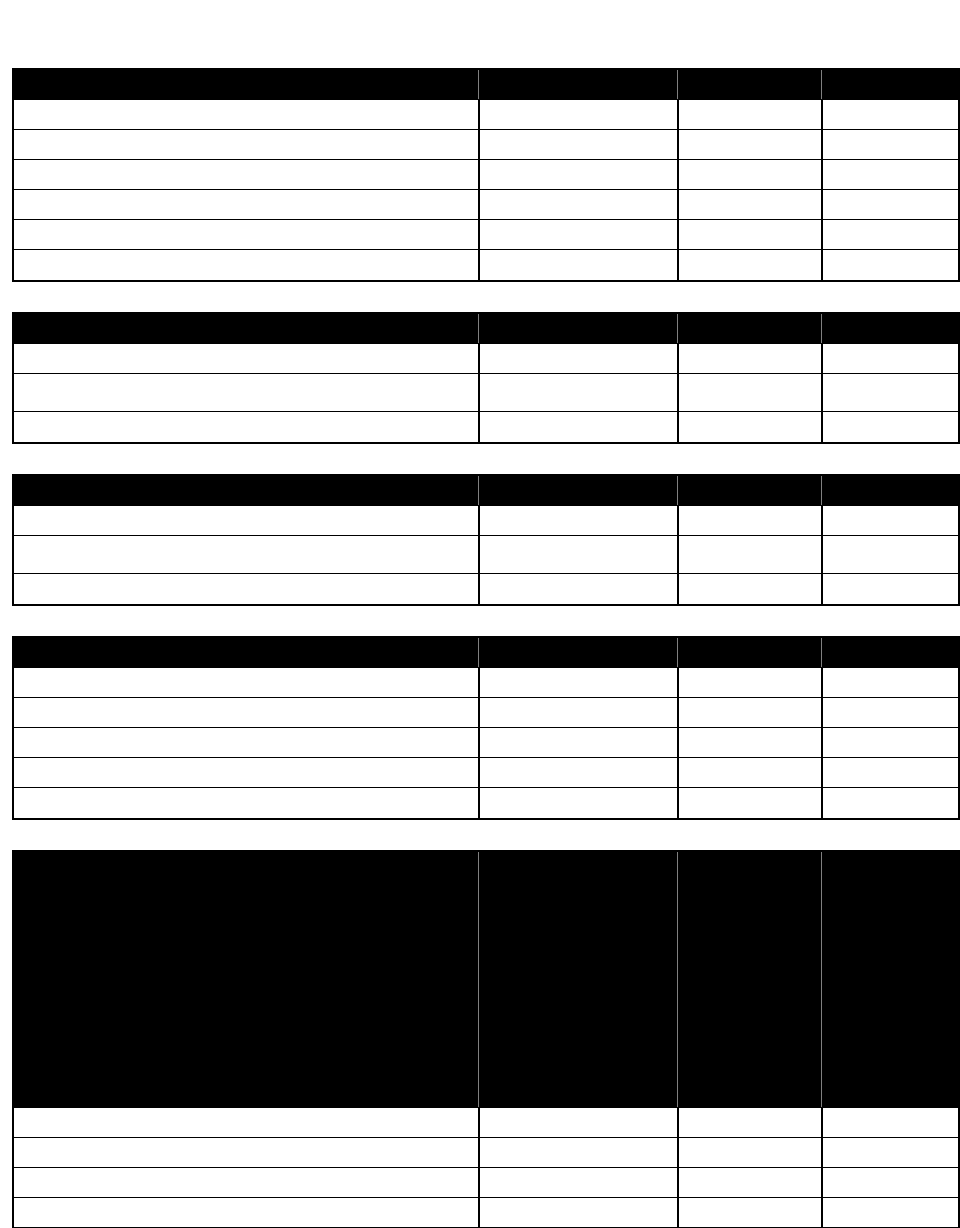
17
Appendix
State of Ohio 2006 – 2017 CHAS Dataset issued on September 29, 2021 HUD released updated
CHAS data for the 2014-2018 period
Income Distribution Overview
Owner
Renter
Total
Household Income <= 30% HAMFI
179,020
407,470
586,490
Household Income >30% to <=50% HAMFI
236,735
282,945
519,680
Household Income >50% to <=80% HAMFI
445,620
331,205
776,825
Household Income >80% to <=100% HAMFI
316,740
157,750
474,490
Household Income >100% HAMFI
1,893,115
403,480
2,296,595
Total
3,071,225
1,582,850
4,654,075
Housing Problems Overview 1
Owner
Renter
Total
Household has at least 1 of 4 Housing Problems
567,435
680,610
1,248,045
Household has none of 4 Housing Problems OR cost burden
not available no other problems
2,503,795
902,240
3,406,035
Total
3,071,225
1,582,850
4,654,075
Severe Housing Problems Overview 2
Owner
Renter
Total
Household has at least 1 of 4 Severe Housing Problems
242,895
381,540
624,435
Household has none of 4 Severe Housing Problems OR cost
burden not available no other problems
2,828,330
1,201,310
4,029,640
Total
3,071,225
1,582,850
4,654,075
Housing Cost Burden Overview 3
Owner
Renter
Total
Cost Burden <=30%
2,513,875
899,010
3,412,885
Cost Burden >30% to <=50%
329,445
312,610
642,055
Cost Burden >50%
207,730
328,380
536,110
Cost Burden not available
20,180
42,850
63,030
Total
3,071,225
1,582,850
4,654,075
Income by Housing Problems (Owners and
Renters)
Household has at
least 1 of 4 Housing
Problems
Household
has none of 4
Housing
Problems OR
cost burden
not available
no other
problems
Total
Household Income <= 30% HAMFI
440,585
145,910
586,490
Household Income >30% to <=50% HAMFI
347,255
172,425
519,680
Household Income >50% to <=80% HAMFI
273,400
503,415
776,825
Household Income >80% to <=100% HAMFI
77,975
396,515
474,490

18
Household Income >100% HAMFI
108,830
2,187,765
2,296,595
Total
1,248,045
3,406,035
4,654,075
Income by Housing Problems (Renters only)
Household has at
least 1 of 4 Housing
Problems
Household
has none of 4
Housing
Problems OR
cost burden
not available
no other
problems
Total
Household Income <= 30% HAMFI
302,870
104,605
407,470
Household Income >30% to <=50% HAMFI
215,470
67,475
282,945
Household Income >50% to <=80% HAMFI
123,400
207,800
331,205
Household Income >80% to <=100% HAMFI
19,290
138,460
157,750
Household Income >100% HAMFI
19,580
383,900
403,480
Total
680,610
902,240
1,582,850
Income by Housing Problems (Owners only)
Household has at
least 1 of 4 Housing
Problems
Household
has none of 4
Housing
Problems OR
cost burden
not available
no other
problems
Total
Household Income <= 30% HAMFI
137,715
41,305
179,020
Household Income >30% to <=50% HAMFI
131,785
104,950
236,735
Household Income >50% to <=80% HAMFI
150,000
295,615
445,620
Household Income >80% to <=100% HAMFI
58,685
258,055
316,740
Household Income >100% HAMFI
89,250
1,803,865
1,893,115
Total
567,435
2,503,795
3,071,225
Income by Cost Burden (Owners and Renters)
Cost burden > 30%
Cost burden >
50%
Total
Household Income <= 30% HAMFI
432,885
351,600
586,490
Household Income >30% to <=50% HAMFI
339,080
123,960
519,680
Household Income >50% to <=80% HAMFI
255,195
44,165
776,825
Household Income >80% to <=100% HAMFI
68,670
7,930
474,490
Household Income >100% HAMFI
82,335
8,460
2,296,595
Total
1,178,165
536,110
4,654,075
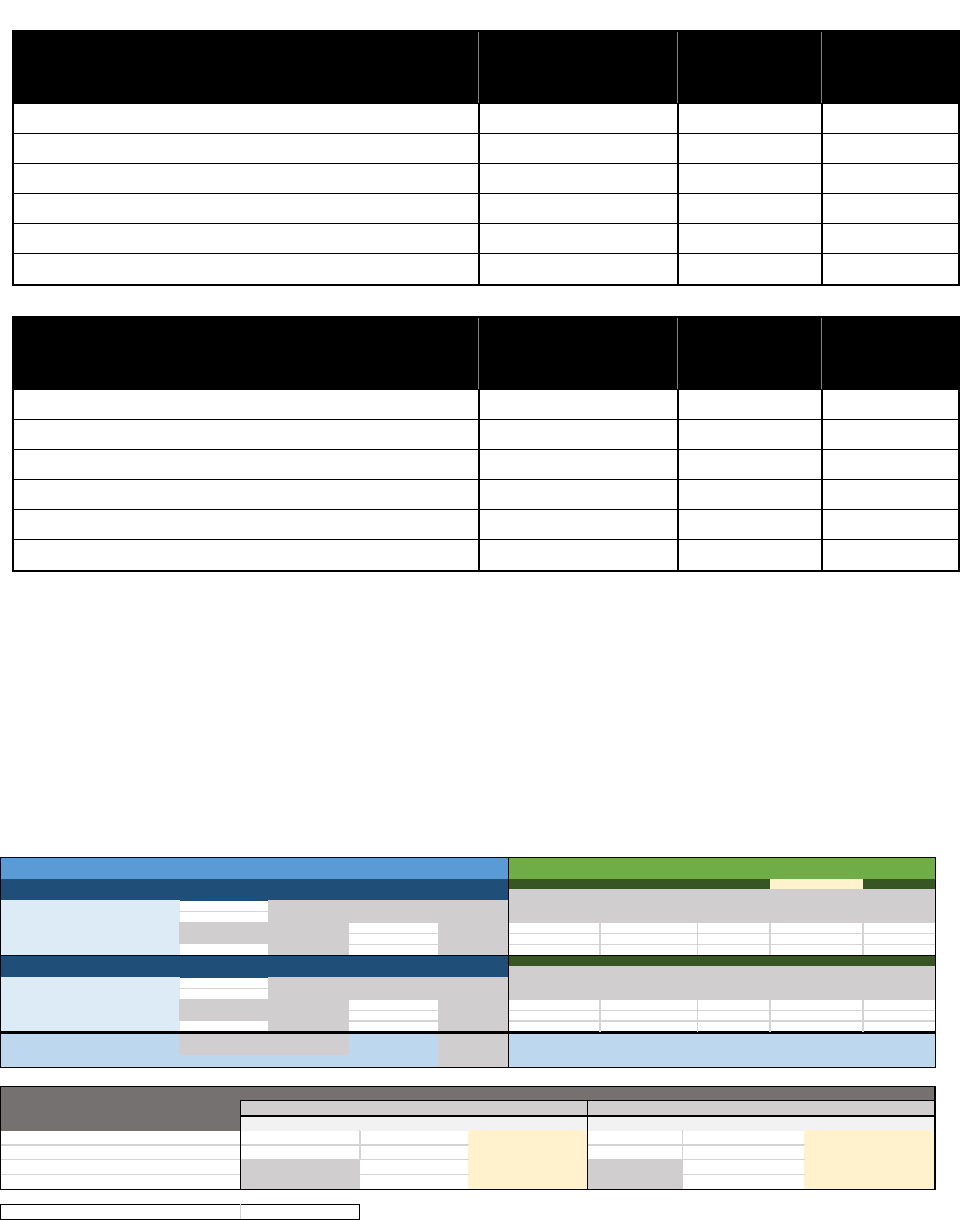
19
Income by Cost Burden (Renters only)
Cost burden > 30%
Cost burden >
50%
Total
Household Income <= 30% HAMFI
297,090
247,245
407,470
Household Income >30% to <=50% HAMFI
210,160
67,360
282,945
Household Income >50% to <=80% HAMFI
111,510
11,095
331,205
Household Income >80% to <=100% HAMFI
14,100
1,360
157,750
Household Income >100% HAMFI
8,130
1,320
403,480
Total
640,990
328,380
1,582,850
Income by Cost Burden (Owners only)
Cost burden > 30%
Cost burden >
50%
Total
Household Income <= 30% HAMFI
135,795
104,350
179,020
Household Income >30% to <=50% HAMFI
128,915
56,600
236,735
Household Income >50% to <=80% HAMFI
143,690
33,070
445,620
Household Income >80% to <=100% HAMFI
54,570
6,570
316,740
Household Income >100% HAMFI
74,205
7,140
1,893,115
Total
537,175
207,730
3,071,225
Year Selected: 2014-2018 ACS
1. The four housing problems are: incomplete kitchen facilities; incomplete plumbing facilities more than 1 person per room; and cost burden greater than 30%.
2. The four severe housing problems are: incomplete kitchen facilities; incomplete plumbing facilities; more than 1 person per room; and cost burden greater than 50%.
3. Cost burden is the ratio of housing costs to household income. For renters- housing cost is gross rent (contract rent plus utilities)
For owners- housing cost is "select monthly owner costs" which includes mortgage payment; utilities; association fees; insurance; and real estate taxes.
The Corporation for Supportive Housing (CSH) State Investment Response Estimator Tool Data
Population Summary Point in Time Total
State-wide
Annualization Rate
Annualized Total Shift to NCS
Individuals PSH RRH Prevention User Defined Self-Resolve
Sheltered 5,826 3.7
Unsheltered 1,810
Newly Homeless Households 0 0 0 0 0 0
Non-Congregate Shelter (NCS) 0 0 0 0 0 0
Total 7,636 33,756 2,998 24,007 3,376 0 3,376
Families PSH RRH Prevention User Defined Self-Resolve
Sheltered 2,985
Unsheltered 34
Newly Homeless Households 10 0 0 0 0 0 0
Non-Congregate Shelter (NCS) 0 0 0 0 0 0
Total 3,019 6,654 665 3,327 1,331 665 665
Newly Homeless Households 0 0 0 0 0 0
Non-Congregate Shelter (NCS) 0 0 0 0 0 0
Grand Total Households 10,655 40,410 3,663 27,334 4,706 665 4,041
Resource Need
Resource Turnover
HIC Bed Count Estimated Turnover Manual Adjust HIC Bed Count Estimated Turnover Manual Adjust
PSH 11,125
1,113 1,113
7,203 720 720
RRH 1,871 617 4,198 1,259
Prevention (No default estimate) 0 0
User Defined (No default estimate) 0 0
Total PH Placements (SPM Measure 7) 18,701
Families
Individuals
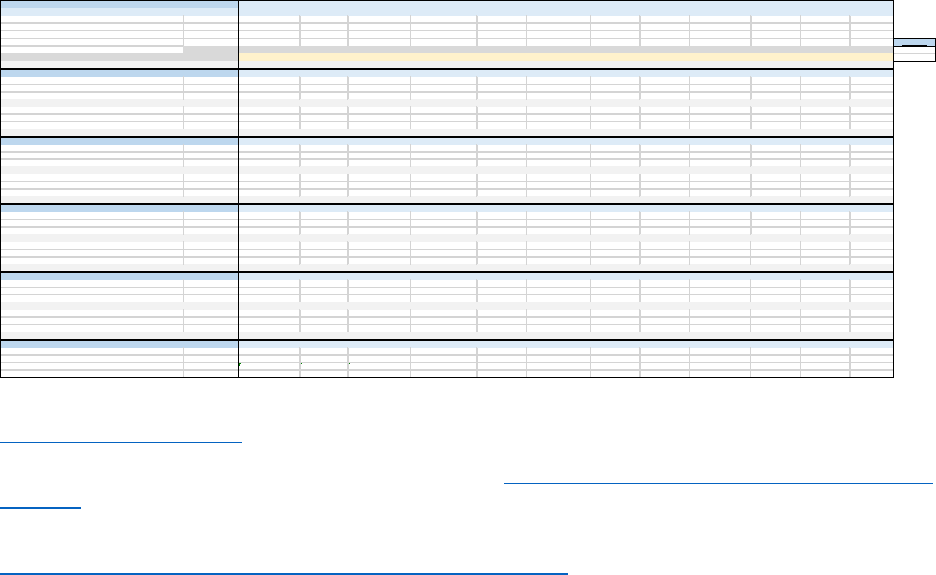
20
National Low-Income Housing Coalition Shortage of Affordable Rental Homes
https://reports.nlihc.org/gap
Ohio Housing Finance Agency 2021 Needs Assessment https://ohiohome.org/hna-20/executivesummary-
hna.aspx
Ohio Housing Finance Agency CONFRONTING HOMELESSNESS - Homelessness in Ohio 2012 – 2018
https://ohiohome.org/news/documents/HomelessnessReport.pdf
Year Need Total Month-by-Month Need
Base Popula tion June July August September October November December January February March Ap ril May
33,756 2,813 2,813 2,813 2,813 2,813 2,813 2,813 2,813 2,813 2,813 2,813 2,813
0 0 0 0 0 0 0 0 0 0 0 0 0
6,654 555 555 555 555 555 555 555 555 555 555 555 555
0 0 0 0 0 0 0 0 0 0 0 0 0 Validation
0 0 0 0 0 0 0 0 0 0 0 0 0
3,368 3,368 3,368 3,368 3,368 3,368 3,368 3,368 3,368 3,368 3,368 3,368
June July August September October November December January February March Ap ril May
0 0 0 0 0 0 0 0 0 0 0 0 0
2,998 250 250 250 250 250 250 250 250 250 250 250 250
1,113 93 93 93 93 93 93 93 93 93 93 93 93
1,885 157 157 157 157 157 157 157 157 157 157 157 157
0 0 0 0 0 0 0 0 0 0 0 0 0
665 55 55 55 55 55 55 55 55 55 55 55 55
720 60 60 60 60 60 60 60 60 60 60 60 60
-55 -5 -5 -5 -5 -5 -5 -5 -5 -5 -5 -5 -5
June July August September October November December January February March Ap ril May
0 0 0 0 0 0 0 0 0 0 0 0 0
24,007 2,001 2,001 2,001 2,001 2,001 2,001 2,001 2,001 2,001 2,001 2,001 2,001
617 51 51 51 51 51 51 51 51 51 51 51 51
23,390 1,949 1,949 1,949 1,949 1,949 1,949 1,949 1,949 1,949 1,949 1,949 1,949
0 0 0 0 0 0 0 0 0 0 0 0 0
3,327 277 277 277 277 277 277 277 277 277 277 277 277
1,259 105 105 105 105 105 105 105 105 105 105 105 105
2,068 172 172 172 172 172 172 172 172 172 172 172 172
June July August September October November December January February March Ap ril May
0 0 0 0 0 0 0 0 0 0 0 0 0
3,376 281 281 281 281 281 281 281 281 281 281 281 281
0 0 0 0 0 0 0 0 0 0 0 0 0
3,376 281 281 281 281 281 281 281 281 281 281 281 281
0 0 0 0 0 0 0 0 0 0 0 0 0
1,331 111 111 111 111 111 111 111 111 111 111 111 111
0 0 0 0 0 0 0 0 0 0 0 0 0
1,331 111 111 111 111 111 111 111 111 111 111 111 111
June July August September October November December January February March Ap ril May
0 0 0 0 0 0 0 0 0 0 0 0 0
0 0
0 0 0 0 0 0 0 0 0 0 0
0 0 0 0 0 0 0 0 0 0 0 0 0
0 0 0 0 0 0 0 0 0 0 0 0 0
0 0 0 0 0 0 0 0 0 0 0 0 0
665 55 55 55 55 55 55 55 55 55 55 55 55
0 0 0 0 0 0 0 0 0 0 0 0 0
665 55 55 55 55 55 55 55 55 55 55 55 55
June June June June June June June June June June June June
0 0 0 0 0 0 0 0 0 0 0 0 0
3,376 281 281 281 281 281 281 281 281 281 281 281 281
0 0 0 0 0 0 0 0 0 0 0 0 0
665 55 55 55 55 55 55 55 55 55 55 55 55
Total Newly Homeless Households
Total Base P opulation
Individuals
Newly Homeless Ind.
Families
Newly Homeless Families
Indicate Predicted Surge %
Total Need (IND)
System PH Pla cements (IND)
Gap in Resource Need (IND)
Total Need (FAM)
System PH Pla cements (IND)
Total Need Newly Homeless Households (FAM)
Gap in Resource Need (IND)
Total Need Newly Homeless Households (FAM)
Total Need (FAM)
System PH Pla cements (FAM)
Gap in Resource Need (FAM)
Rapid Re-Housing
Total Need Newly Homeless Households (IND)
Total Need (IND)
Gap in Resource Need (FAM)
User Defined
Total Need Newly Homeless Households (IND)
Total Need (IND)
System PH Pla cements (IND)
Gap in Resource Need (IND)
Total Need Newly Homeless Households (FAM)
Total Need (FAM)
System PH Pla cements (FAM)
System PH Pla cements (FAM)
Gap in Resource Need (FAM)
Prevention
Total Need Newly Homeless Households (IND)
Total Need (IND)
Self-Resolve Pr ediction by Month
Total Self-Resolved (IND)
Total Self-Resolved (FAM)
System PH Pla cements (IND)
Gap in Resource Need (IND)
Total Need Newly Homeless Households (FAM)
Total Need (FAM)
Total Self-Resolved Newly Homeless Households (IND)
Total Self-Resolved Newly Homeless Households (FAM)
Gap in Resource Need (FAM)
System PH Pla cements (FAM)
Total Need Newly Homeless Households (IND)
Permanent Supportive Housing
